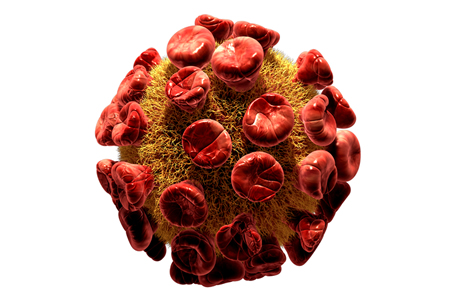Stem cell transplants have been previously used to cure two patients of HIV. In both cases, the patients received a dose of stem cells taken from a donor who lacked a molecule called CCR5, to which HIV is attracted. These two patients, known as the Berlin and London patients, are the only two individuals to have been cured of HIV.
A team of researchers investigated whether the results seen with the London and Berlin patients could be reproduced using autologous stem cell transplants. This involves harvesting stem cells from the bone marrow of the patient with HIV, modifying the stem cells in the lab so they lack CCR5, and then reintroducing them into the same patient. This approach would be preferable, not only due to the lack of suitable donors, but also to prevent rejection.
Autologous stem cell transplants as treatment for HIV are currently being tested in an early clinical trial, but the minimum dose of stem cells to prevent remission is unknown.
“The major obstacle to HIV eradication is a latent reservoir of long-lived infected cells, and cure strategies aim to eliminate all infected cells or permanently prevent viral reactivation from latency,” said first author E. Fabian Cardozo-Ojeda, Senior Staff Scientist at the Vaccine and Infectious Disease Division, Fred Hutchinson Cancer Research Center, Seattle, US. “We wanted to recreate the cures seen in the Berlin and London patients but with reduced toxicity.”
To solve the problem, the researchers developed a mathematical model to investigate the dynamics of residual and transplanted stem cells, HIV viral load, and how they are affected by antiretroviral therapy (ART) withdrawal. Data to develop the model came from studies on 22 monkeys with simian HIV which received a stem cell transplant, either with CCR5 gene editing or without. Some of the monkeys then stopped ART after a year.
The data showed that viral load after ART withdrawal was higher in transplanted than untreated animals, indicating stem cell transplantation may reduce existing immune cell immunity to HIV, which the researchers thought may be recovered by disrupting CCR5 in the transplanted stem cells. Their model was then used to calculate the conditions that were necessary to achieve ART viral control after ART withdrawal.
The model predicted viral control can be achieved following analytical treatment interruption (ATI) when transplanted HSPCs are at least fivefold higher than residual endogenous HSPCs after total body irradiation, and if the fraction of protected HSPCs in the transplant was at least 76%–94% of the total population of transplanted stem cells. “Under these conditions, if ATI is withheld until transplanted gene-modified cells engraft and reconstitute to a steady state, spontaneous viral control is projected to occur,” wrote the researchers.
You can read more about the study in the paper –Thresholds for post-rebound SHIV control after CCR5 gene-edited autologous hematopoietic cell transplantation – which was recently published in the eLife. DOI: 10.7554/eLife.57646
